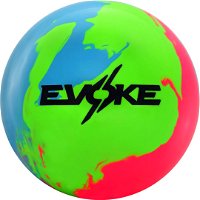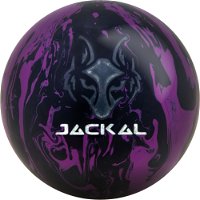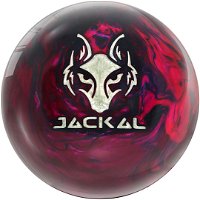
We have put together a list of bowling terms that every bowler should know. The list of terms is always growing so if you see one we missed let us know and we'll add it to the list.
The List of Terms in Alphabetical OrderABC American Bowling Congress. Former official rule making body of ten-pin bowling.
Alley Surface on which the ball is rolled(also lane bed).
Approach The space extending back from the foul line used to make the steps and delivery (also runway).
Arrows The triangles embedded on the lane used in aiming the throw.
Baby split The 2-7 or 3-10 split.
Backup ball A ball that curves left to right for a right-handed bowler or right to left for a left-handed bowler.
Bed posts The 7-10 split.
Big four The 4-6-7-10 split (also double pinochle).
Blind score When a league bowler is "blind" and can't find his/her way to the league that evening, the bowler's average is simply used (as if he/she just bowled that score) when figuring the team's total for each game.
Blocking Creating an illegal track to the strike pocket by the way the lane is dressed (oiled).
Blow A miss or an error failing to convert a spare other than a split.
Brooklyn Refers to a ball that crosses over to the other side of the headpin opposite the side it was thrown (i.e. a Brooklyn strike hit the 1-2 pocket for a right-hander)(also crossover).
Bucket The 2-4-5-8 or 3-5-6-9 leave after the first throw.
Carry To knock down a pin or pins.
Channel Semicircular grooves or drop-off area on each side of the bowling surface (also gutter).
Cherry To pick off the front pin or pins but leaving the back pin on a spare attempt.
Christmas tree The 3-7-10 split for a rt. hander; 2-7-10 split for a left hander
Clothesline The 1-2-4-7 or 1-3-6-10 pins still standing after the first ball (also picket fence).
Count Usually the number of pins knocked down in the next frame that apply to a spare or strike.
Creeper A slow ball (also known as a puff ball).
Curve ball A ball thrown with spin that follows a wide arc toward the pins.
Dead ball A weak ball that has lost its drive, rotation, or forward thrust
Deadwood Pins that have been knocked down.
Delivery The rolling of the ball.
Dime Store A split leaving the 5-10.
Double . Two consecutive strikes.
Dutch 200 A game of exactly 200 by alternately rolling spares and strikes.
Field goal A missed throw between widely separated pins hitting nothing but air.
Foul Touching the foul line or beyond in any way when delivering the ball.
Foul line The restraining line between the lane and the approach.
Four bagger Throwing four strikes in a row.
Frame One of ten units that comprise a game (represented by a large square and smaller squares within on the score sheet).
Game A line on the score sheet consisting of 10 frames. (Same as Line.)
Goal posts The 7-10 split. (Same as Bed posts.)
Graveyard (s) An extremely difficult lane in the house.
Gutter Semicircular grooves on each side of the surface on which the ball rolls (also channel).
Gutter ball An errant ball that enters the gutter before reaching the pins (also channel ball).
Hambone New term given to a 4-bagger (four strikes in a row).
Handicap An adjustment in scores in order to equalize competition by adding pins on a predetermined basis.
Head pin The number one pin.
High hit A solid hit on a pin due to contact near its front center; hitting too much head pin on a strike attempt.
Holding lane A lane where the ball does not curve or hook much.
Hook A ball that initially moves straight down the alley and curves towards the pin (from right to left for a right-hander or left to right for a left-hander) on the latter part of the lane.
House The bowling establishment or building.
Kegler A bowler (German word).
Kickbacks The side boards around the pins that divide lanes where pins frequently rebound or "kick" back onto the lane aiding in pin action.
Kindling (wood) Light pins or pins that are falling easily during a game.
King pin The number 5 pin. It is a key pin to produce a strike: a light pocket hit or deflected leaves this pin still standing.
Lane bed The surface on which the ball is rolled.
League Organized competition on a weekly basis for team play.
Leave Pins left standing after the first ball has been rolled.
Lift Upward motion on the ball at the point of release. (As the ball rolls from the fingers of the up swinging hand, spin is imparted to help drive the ball.)
Light hit A ball hitting mostly the side of the pin deflecting it sideways.
Line A game--10 frames. Also refers to the path of the ball from release to the pins.
Line bowling A method of aiming by visualizing the imaginary line the ball will take to the pins.
Lofting . Throwing the ball too high above the lane bed.
LPBT Ladies' Professional Bowling Tour (former name of the current PWBA).
Mark Making either a spare or strike in a frame.
Miss An error in a spare attempt other than a split. (Same as a Blow.)
Mixer A ball that creates a lot of pin action.
Move in Adjusting of stance position nearer the center of the approach.
Move out Adjusting of stance position nearer the outside of the approach.
Nose The front of the pin.
Oil Dressing or conditioner used to coat the lanes.
Open frame A frame having neither a spare or strike.
PBA Professional Bowlers Association.
Perfect game A game of all strikes--twelve strikes in a row--resulting in bowling's maximum score of 300.
Pin bowling Looking at the pins to aim and throw the ball (better bowlers tend to spot or line bowl).
Pin deck Area on which the pins are set.
Pocket The space between the 1-3 pins for the right-handed bowler; between the 1-2 pins for the left-handed bowler.
Pushaway The pushing out (forward) of the ball to begin the swing (coincide with first step of four-step approach.)
PWBA Professional Women's Bowling Association.
Railroad A split.
Rake The part of the pin-setting machine that drops and sweeps the fallen pins into the back of the lane (also sweep bar).
Running lane A lane where the ball curves a lot relative to a normal delivery (opposite of holding lane).
Sandbagging Deliberating keeping an average low so that person can receive a bigger handicap.
Scratch The actual score the bowler makes; it is without any handicap adjustment (to equalize competition).
Six pack Six strikes in a row!!
Sleeper A rear pin that is not easily seen because of a pin directly in front of it (Ex.: 2-8, 3-9, 1-5).
Span On a bowling ball, the distance between the thumb and finger holes
Spare To knock down with the second throw the pins standing left after the first throw.
Split Various combinations of pins standing after a first throw where one or more pins has been knocked down creating a space between standing pins and thus a harder spare. Examples: 4-5, 5-6, 4-7, 6-10, 7-10, 4-6-7-10.
Spot A target on the alley bed (usually the arrows or the dots) where the bowler aims.
Spot bowling A method of aiming the ball in which spots (arrows and dots) on the lane are used as targets rather than looking at the pins during the throw.
Stiff lane A non-hooking lane.
Straight ball Ball thrown that takes a direct path to the pins without curving.
Strike Knocking down all ten pins with the first effort.
Strike out Making three strikes in the tenth frame.
Tap An apparent perfect hit for a strike but one pin is left standing.
Thin hit (See light hit.)
Throwing rocks Piling up strikes with a speed ball.
Triple Three consecutive strikes (also turkey).
Turkey Three consecutive strikes.
USBC United States Bowling Congress. Official rule making body of ten-pin bowling.
Vacancy A "dummy" score used when a team does not have the same number on the team roster as do other teams. The vacancy score is set by the league and carries a handicap the same as if some bowler was carrying that average.
Washout The 1-2-10 or 1-2-4-10 leave for right-handers; 1-3-7 or 1-3-6-7 for left handers. Distinguished from a split due to the head pin (1 pin) still standing.
WIBC Women's International Bowling Congress.
Working ball A ball with great spin that produces a lot of action among the pins. The same ball will break up splits when hit on the nose.















